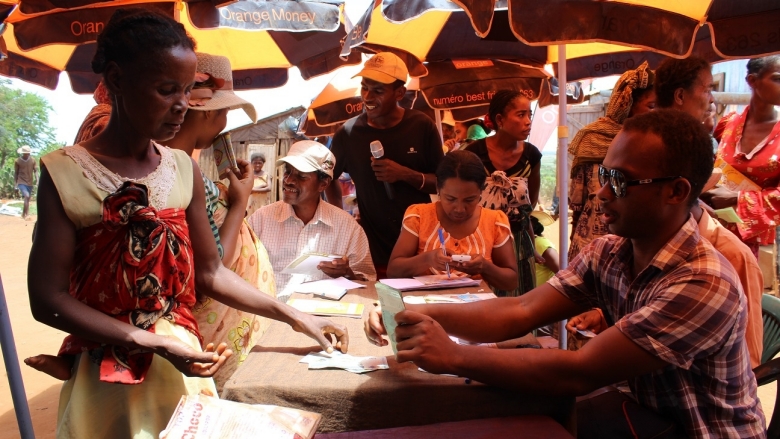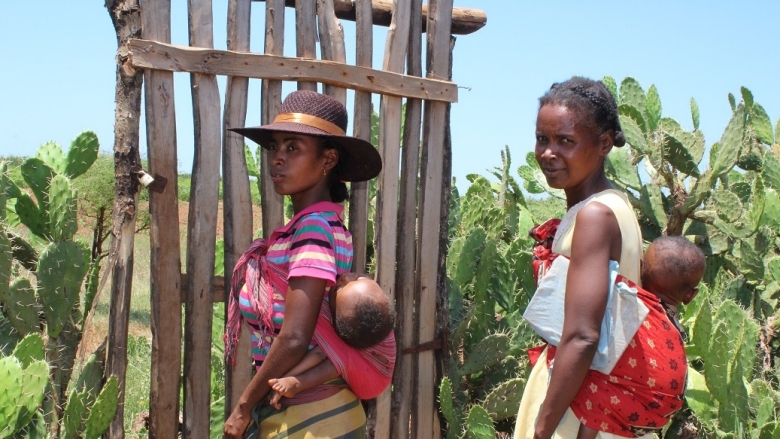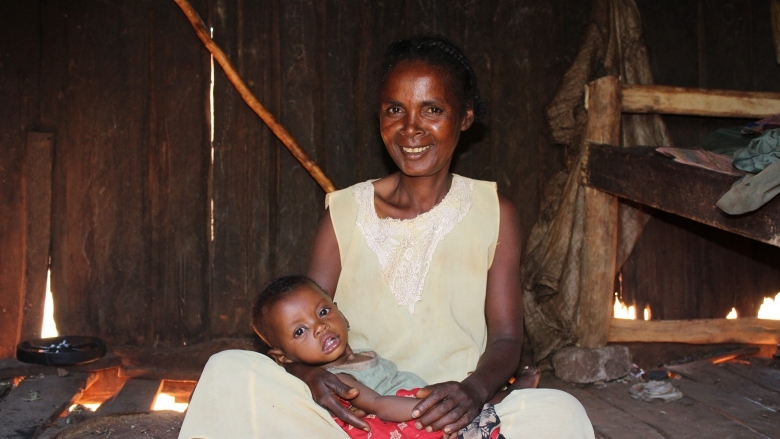ANTANANARIVO, February 7, 2017─She has lost everything, sold off every possession she owned. In her small hut built of wood, there is nothing left but a makeshift bed without a mattresses or mats, some dirty clothes, and ash─the remains of a meal prepared long ago. There are no pots, plates, cooking utensils, spoons, glasses, or a water bucket.
A 40-year-old mother of 11 children, Ialatsara is lined with fatigue and emaciated by almost three years of drought, the kere as it is called in the south of Madagascar. She holds Natody, her 20-month-old daughter in her arms. The tiny girl is very lean and tired.
Ialatsara and her husband own a small plot of land where in better times, they grew beans, sweet potatoes, and vegetables. However, there hasn’t been a single rainfall in three years, so the land has yielded no crops.
“We had to sell everything last year. The crops were very bad, we had nothing to eat and the children went to school hungry. It was very hard. We could eat and drink some days because friends and family gave us some sweet potato leaves and a little of their corn,” reminisces Ialatsara.
Despite that sober memory, Ialatsara is smiling today. This morning she received 60,000 ariary (about $20), her first cash transfer under the Drought Emergency Program financed by the World Bank. Half of the money, about 30,000 ariary, will allow her to buy what her household needs the most (it is calculated on the basis of an estimated domestic basket), and the other half will serve as a recovery fund to jumpstart subsistence activities that will help rebuild her life and that of her family.
Ialatsara has been waiting impatiently for this transfer since she learned about this new three-year program. She has already made plans about how she will spend the money, starting with buying 200 kapoks of corn that will feed her family for at least a month after so many months of hunger, and by buying chicken to rebuild her subsistence activities that will help her better cope with future shocks.



